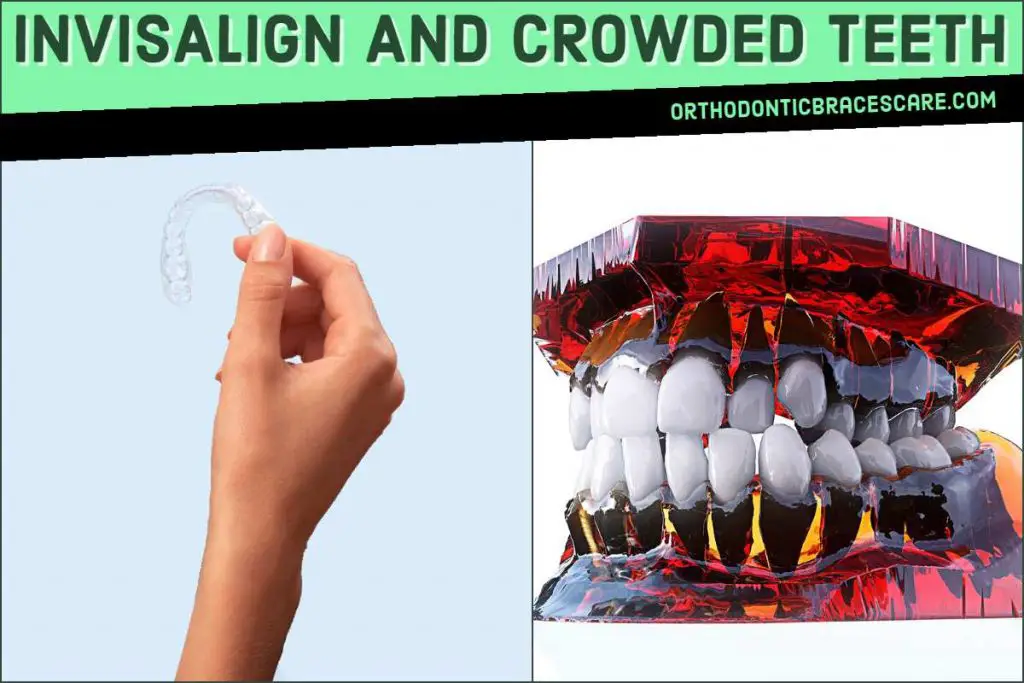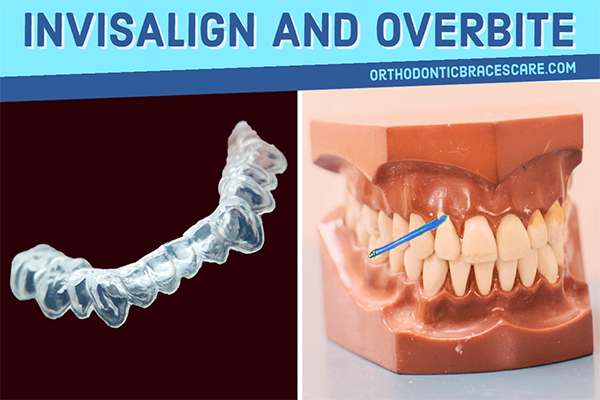You want to fix your crooked or crowded teeth for a beautiful smile. But, you may not be sure which treatment option you should choose. So, you might ask, Can Invisalign fix crowded teeth?
Invisalign can fix the crowded teeth effectively and straighten your smile. Because of the invention of various attachments and techniques, it can also correct many severe cases now. However, you may need to have a jaw surgery or tooth extraction before the Invisalign if you have a problem with jawbones.
Getting crowded teeth fixed is necessary to avoid any complications. A clear aligner looks so simple.
But, how does Invisalign fix overcrowded teeth?
How long does it take to do that? Why should you consider it over other options?
Let’s know all of these.
When Invisalign can fix crowding?
Here are the crowding case that Invisalign can fix perfectly
Mild to moderate crowding
Invisalign correct mild to moderate crowding cases quite easily. In those cases, it may take less time to fix the problem.
Invisalign for crowded top or bottom teeth only
Sometimes you may have crowding only on one jaw, especially on the bottom teeth. Can Invisalign fix crowded bottom teeth?
Yes, Invisalign works nicely to fix crowded top or bottom teeth. However, you still need two trays to fix it, because moving teeth of only one jaw cause a bite problem and make the situation worse.
Some severely crowded teeth
Often people ask, “are my teeth too crowded for Invisalign?”
Yes, Invisalign works for very crowded teeth. In some cases, it could be a better option than braces.
Crowded teeth with an Overbite
Invisalign also fix an overbite as well as crowded teeth. First of all, the orthodontist aligns your teeth properly and then correct the overbite.
Learn how do you get Invisalign for an overbite.
Crossbite and crowding
When one tooth is out of place, it’s known as a crossbite. You may also have a crossbite along with crowding because the arch length is less.
Invisalign treats the crossbite and crowding at the same time and gives you straighten teeth.
Invisalign for underbite and crowded teeth
An underbite is a condition when your bottom teeth or jaw are forwardly places compared to top teeth.
Some people have crowding and underbite at the same time. The clear aligner also corrects all of these problems.
Tooth extraction cases
You may need a tooth extraction to create space for teeth so that they can be aligned properly. Since various attachments are available, extraction cases can also be treated by Invisalign effectively.
How does Invisalign fix crowded teeth?
Invisalign fix teeth crowding by putting pressure on teeth which helps to move them in a favorable position to straighten them.
If you aren’t familiar with the term crowding, you should know it first.
When one tooth overlaps the other tooth, it’s called crowding or overcrowding. It can happen to many teeth.
This happens when you lack space in the arch or jaw for the teeth. Early loss of primary teeth or delayed eruption of permanent teeth can also lead to crowding.
In this situation, teeth don’t stay in their actual position and overlap each other and get twisted or tilted.
Sometimes, bad oral habits like thumb-sucking or tongue thrusting may be the cause. The goal of the treatment is to move them to the appropriate position.
Here is how Invisalign works for crowded teeth
You get two trays in the Invisalign treatment. The dentist designed it for your mouth. That’s why he takes a 3D impression and makes a mold at the first appointment.
He also takes an x-ray and a picture of your mouth. All of these help him design the treatment. From this, custom made aligners are made to fix the crowding.
You have to wear the tray for 22-23 hours per day and follow all the instructions by the orthodontist.
One set of aligners put an ideal force on the teeth to a certain limit. This pressure is directed toward the desired place. This force puts pressure on the bone that supports the tooth.
When the bones feel the pressure, changes occur within the bones, known as osteoclastic and osteoblastic activities.
In this mechanism, one side of the bone gets dissolved and the other side forms new bone. As a result, teeth start to move within the bones. One set of trays can move very little.
So, you get a new set of aligners every 1 to 2 weeks. Teeth start to become straightened over time and crowding is fixed.
You may also get different types of attachments with the trays according to the need.
How much does Invisalign cost for crowded teeth?
Invisalign or clear aligners may cost you anywhere from $3,000 to $7,000 to treat crowded teeth. If you have dental insurance that covers the clear aligners, it will cost you less.
However, pricing depends on the severity and duration of treatment. It also varies from country to country.
How long does Invisalign take for crowded teeth?
The duration of crowding treatment with Invisalign varies from case to case. On average, it may take 12 to 18 months to fix crowded teeth and give you a straight smile with Invisalign excluding the duration you have to wait for the tray to be delivered.
During this time the clear aligners not only fix the crowding but also correct all the issues to give you a perfect smile. However, some minor cases may need less than that.
You get the first set of trays within the four weeks after the dentist takes the impression of your teeth.
Since teeth have a tendency to shift back to their old position, you need to wear a passive retainer for 3 to 6 months more after the Invisalign is off.
Why should you fix crowding with Invisalign?
You have other alternatives to correct the overcrowded teeth. But, why should you choose Invisalign?
Here are the reasons for which you can get an Invisalign clear aligner for crowded teeth.
Removable
Unlike braces, Invisalign isn’t fixed to your teeth. You can remove it anytime you want. But, you should do that without an emergency or the instruction by your dentist to get better results.
Comfortable
Invisalign is made of plastic. It has no chance to rub your cheek or gums or poke them. Moreover, it doesn’t hurt that much when you get it.
Pleasing appearance
Maybe it’s the most common reason for getting Invisalign for crowded teeth. As the trays are transparent, people can’t notice it easily. So, you can wear it with confidence.
Easy to maintain and better lifestyle
You can clean the aligners easily. Besides, you don’t have any special food restriction with it either.
The only thing you need to do is keep it in your mouth for 22 hours a day.
Maintaining oral hygiene
Maintaining oral hygiene is also very simple with the Invisalign. You can remove it while cleaning teeth and brush and floss your teeth normally.
But, why should you treat crowded teeth?
If you don’t get the treatment, otherwise you may face the following problems.
- Build up excess plaque and tartar
- Poor oral hygiene despite cleaning teeth
- Increasing the risk of developing tooth decay
- Tooth sensitivity
- Increasing risk of Gum diseases
- Pain in the jaw in severe cases
- Eating difficulty
- Increasing the chance of having a broken tooth
When do you need more than Invisalign for crowded teeth?
You may need other treatment options with or without Invisaligns in the following cases.
Crowded teeth with small-sized jaw
In some cases, crowding is so severe to treat with Invisalign. This happens when the arch length or size of the jaw is too small. In that circumstance, you need jaw surgery before getting Invisalign.
Tooth shape
If the shape of one or more teeth is too small, the clear aligner can’t be placed to move them.
Too much-rotated tooth
Tooth position is a very important factor to treat any case with Invisalign. Rotation is a common problem with overcrowded teeth.
As there is a lack of space in the jaw, the tooth gets rotates its original position during the development of teeth and jaw.
If it’s rotated over 20 degrees, the aligners may not be able to move it to make it straight.
Over tilted tooth
When you have crowding, the tooth can be tilted forward or backward. If it’s more than 45 degrees, Invisalign may not be helpful to pull it into a perfect position.
Extruded or Intruded tooth
If you have a tooth that needs to raise or lower from its position, a clear aligner will struggle to do that.
Complicated crowding cases
When you have teeth crowding with other serious orthodontic problems that make the situation complicated, you may need other treatment options.
Consult with an orthodontist to know what you need.
Crowded teeth with midline shift
The patient who has overcrowded teeth may also have midline shifting. Normally, the junction between upper teeth and lower teeth lies at the imaginary midline of your face.
If it’s shifted more than 2mm to left or right, the clear aligner may not be beneficial to correct it.
Crowding with dental work
Adults may face the problem with Invisalign treatment if they have previous dental work. Invisalign isn’t effective with a bridge prosthesis.
If they have a crown or porcelain veneer, they can’t have an attachment for Invisalign treatment.
Invisalign alternative for severely crowded teeth
If you have serious skeletal problems, you need jaw surgery for crowding. Sometimes, it’s better to have braces for more complex cases.
Some extraction cases may also need braces. If the crowding is detected during the growing age, it can be fixed using jaw expanders and headgear.
Palatal or jaw expanders widen the jaw and create enough room for teeth to solve the crowding.
Takeaways
Invisalign clear aligner fixes most of the teeth crowding cases perfectly. in the Invisalign system, two aligners and different attachments are used to move the teeth in the desired position.
Some severe and skeletal cases need jaw surgery or tooth extraction to create more space to straighten teeth before getting Invisalign.
You should follow the advice provided by the orthodontist to get the best outcome from the treatment.
Pallab Kishore is a certified dentist and the owner of Orthodontic Braces Care.
He completed BDS in 2014. Now, he is an MS resident in Orthodontics, BSMMU. He likes content writing and has 12+ years of experience in blogging.



